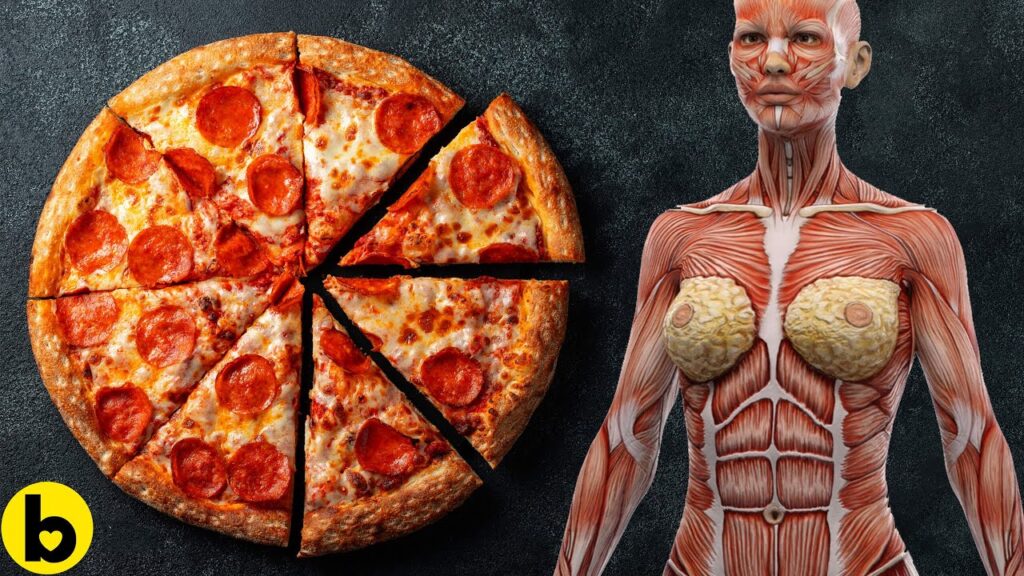But since pizza is still a source of saturated fat (about five grams) and chock-full of sodium, limit it to once a week and load up on those veggies.
Is it okay to have pizza once in awhile?
While it’s okay to eat a piece of frozen, fast-food or pizzeria-style pizza occasionally, it’s best to limit consumption to no more than a few times per month. However, for true pizza lovers who want to enjoy this food more frequently, there are ways to make this cheesy dish a whole lot healthier.
How many people eat pizza once a week?
41% of Americans Eat Pizza Once a Week.
Which pizza is the healthiest?
“Choose thin crust versus thick crust or even stuffed crust to help reduce the total calories and sodium,” says Kimberlain. One slice of a small thin-crust pizza with no cheese has 141 calories and 282 mg sodium, according to the USDA.
Is it OK to eat Dominos once a week?
But since pizza is still a source of saturated fat (about five grams) and chock-full of sodium, limit it to once a week and load up on those veggies.
Is pizza really unhealthy?
The cheese on pizza is high in saturated fat, which increases your risk for high cholesterol and heart disease. Each 5-ounce serving of cheese pizza contains 18.5 grams of fat, or 28 percent of the daily value for fat. Saturated fat makes up about 6.5 grams of this fat, or 33 percent of the DV.
Is there a healthy pizza?
Go Thin, Not Deep On the other hand, opting for the thin-crust version, when available, usually saves you calories. At Papa John’s, you’ll cut 70 calories per large slice of a cheese pizza. At Domino’s, a large thin-crust slice has about 60 fewer calories than a regular hand-tossed slice.
Is pizza healthy in moderation?
While many may think of pizza as a splurge, here’s a new way to think of it: Pizza can actually fit into a balanced, healthy diet and provide many nutrients when eaten in moderation.
Why do I always want pizza?
Pizza toppings are also packed with a compound called glutamate, which can be found in the tomatoes, cheese, pepperoni and sausage. When glutamate hits our tongues, it tells our brains to get excited — and to crave more of it. This compound actually causes our mouths to water in anticipation of the next bite.
How many slices of pizza is normal?
Small pizzas average between 8 and 10 inches in diameter and will yield about six slices. Medium pizzas run 12 inches in diameter and will give you about eight slices. Large pizzas are 14 inches in diameter and will offer approximately 10 slices.
Is pizza healthy in moderation?
While many may think of pizza as a splurge, here’s a new way to think of it: Pizza can actually fit into a balanced, healthy diet and provide many nutrients when eaten in moderation.
Is pizza healthy to eat?
And it isn’t healthy. Depending on the type of crust, the amount of cheese and the toppings used, pizza can rank anywhere from nutritionally decent to a diet disaster. Even healthy pizzas deliver a good amount of sodium from tomato sauce and cheese, so if you are watching your salt intake, you should eat with caution.
Which pizza crust is healthiest?
Technically speaking, thin-crust pizza is healthier than thick-crust pizza! The thinner a pizza crust is, the fewer calories and carbohydrates it contains. Thin crust pizza also has less salt, less sodium, and less saturated fat.
Is mozzarella cheese unhealthy?
Mozzarella is relatively low in fat and calories. This makes it a healthier cheese option compared to others. Mozzarella contains probiotics such as the bacteria Lactobacillus casei and Lactobacillus fermentum.
What happens if I eat pizza every week?
Why do I feel better after eating pizza?
Serotonin is produced from carbs You’ll be shocked to know that the carb-fest that is pizza actually fills you with serotonin. This is partially because when you’re craving pizza and that craving is satisfied, your brain produces serotonin. This is also because carbs are used heavily to make serotonin.
Is it OK to have fast food once a week?
Fast food contains a lot of unhealthy ingredients like sugar, saturated fats, trans fats, and a lot of calories. While eating fast food once a week will not pose any harm in the short run, once you start regularly indulging in cheat meals, all these ingredients can come back to haunt your body.
Is pizza a junk food or fast food?
Pizza is a common fast food category in the United States, with nationwide chains including Papa John’s, Domino’s Pizza, Sbarro and Pizza Hut. It trails only the burger industry in supplying children’s fast food calories.
Is it OK to eat pizza if you workout?
It’s similar to eating pasta after workouts: It’s OK to fuel your body with carbs. Fortunately, pizza happens to have the perfect combination of both carbohydrates and plenty of protein, and it can even be beneficial as a post-workout meal.
Can pizza mess up your stomach?
Gastrointestinal reflux disease, or GERD, might also be responsible for discomfort after eating pizza. Some common pizza toppings, including the tomatoes in pizza sauce, tomatoes themselves, pepperoni and onions can all aggravate GERD.
How long does fat stay in the stomach?
Average Transit Time Since fat takes the longest to digest, you can expect that a fatty meal will be fully digested in closer to 72 hours than 24 hours. You can further estimate that a fatty meal higher in carbs than protein will digest more quickly than a fatty meal higher in protein than carbs.
Is pepperoni healthy to eat?
Pepperoni slices add flavor to a slice of pizza, but they aren’t a nutritious topping. The cured meat is high in saturated fat and sodium, and it contains protein, but it doesn’t supply large doses of essential nutrients.









